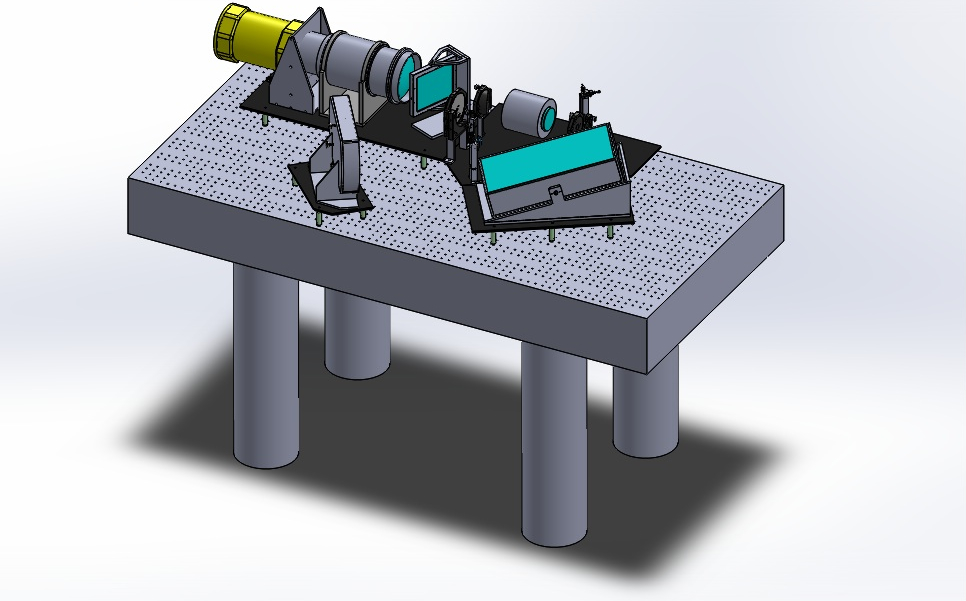

Overview: The Fiber-fed High Resolution Echelle (FHiRE) Spectrograph is being built at the University of Wyoming in collaboration with Indiana University. When complete the instrument will be deployed at the Wyoming Infrared Observatory (WIRO) 2.3-meter telescope. The spectrograph is designed for high operational efficiency with two primary goals: (1) the acquisition of a high dispersion spectral library of thousands of stars for characterizing the elemental enrichment history of our galaxy, the Milky Way, and (2) the detailed characterization of the extra-solar planetary systems discovered by the soon to be launched TESS satellite. Commissioning of FHiRE is expected during the 2018-2019 academic year.
FHiRE is supported through funding from Indiana Univerity and NASA. WIRO is supported through funding from the State of Wyoming.
News (6/2017): FHiRE will be developed in two phases. Phase I: FHiRE is designed as a "white-pupil echelle" configuration and the initial version will be mounted on a 3-foot by 6-foot vibration-isolated optical bench. Each component will be mounted on individual, but connected, carbon-fiber plates and enclosed within an insulated cover in order to minimize the effects of thermal expansion. FHiRE is fed by two optical fibers from the telescope, a science fiber upon which the light of a target star is focued and a calibration fiber which is illuminated by both a Thorium-Argon lamp and a Fabry-Perot etalon. The calibration fiber will provide a simultaneous, precision wavelength calibration spectrum for the instrument for precision radial velocity measurements. Phase II: During the completion and commissioning of Phase I of FHiRE we will being the construction of a vacuum enclosure for the instrument. A new ceramic optic bench will be constructed and this bench will be mounted within the enclosure for thermal isolation. This will allow even greater thermal stability with the goal of reaching an instrumental velocity precision of 2 m/sec over timescales of 2 hours or more. This requirement is quite demanding and will require that the entire instrument be as isolated from its surrouindings as possible in order to mitigate against environmental temperature and pressure variations. In order to achieve this, the vacuum enclosure will be vibrationally isolated within an industrial refridgerator. The refridgerator will be housed in a separate building attached to the observatory. The optical design was developed by Ming Liang of the National Optical Astronomy Observatories (NOAO). The mechanical design of FHiRE was developed by Dr. Michael Pierce of the University of Wyoming. Drs. Catherine Pilachowski and Constantine Deliyannis of Indiana University have to date acquired most of the optical components for FHiRE with the exception of the spectrograph camera. The optical design of the camera is now complete and the bid requests for its manufacture and construction are expected to be released early in the fall of 2017. Construction of the mechanical components of FHiRE should also begin in late 2017.
